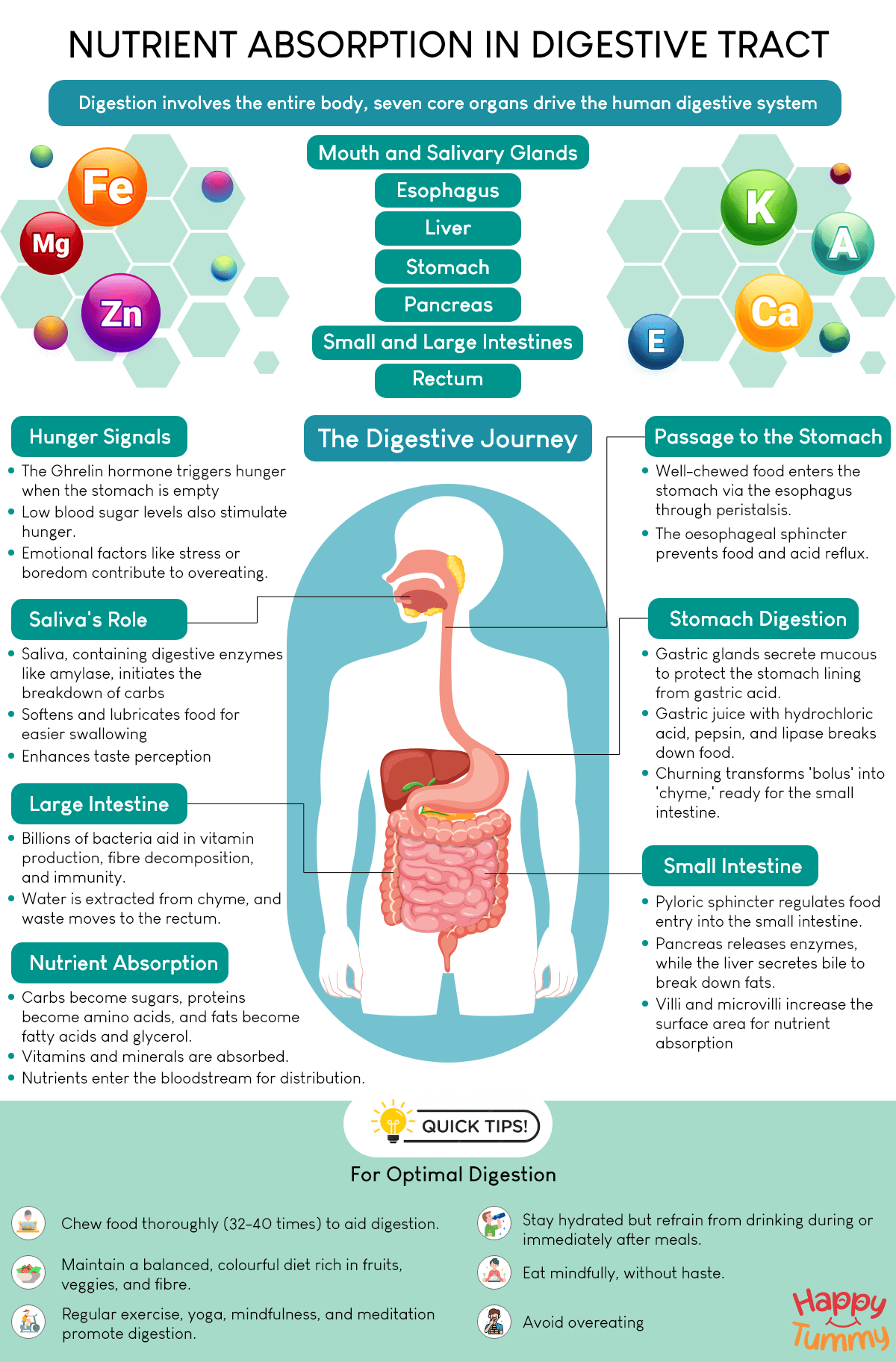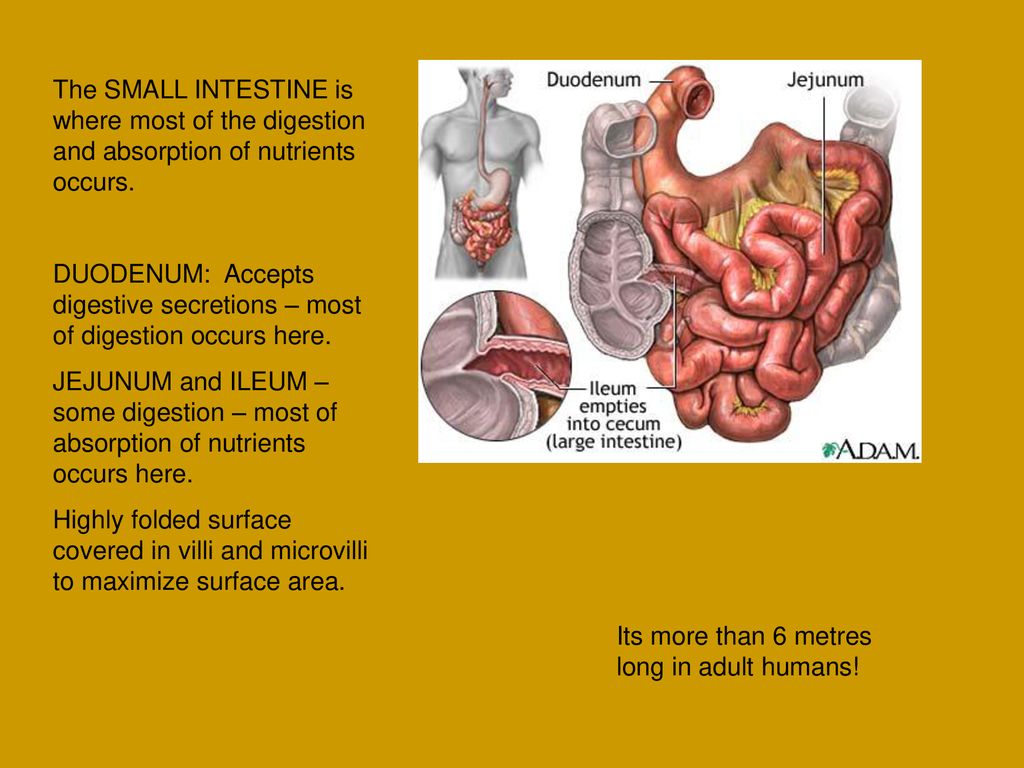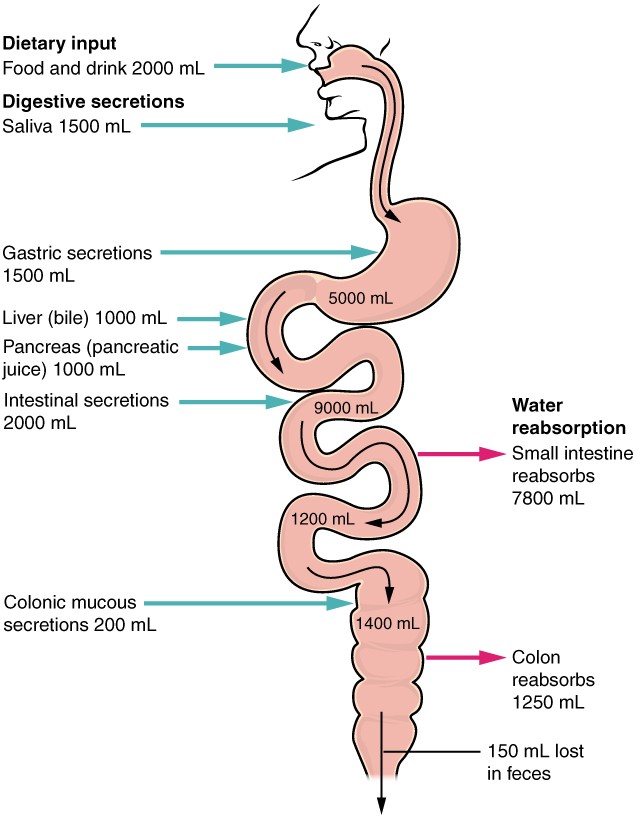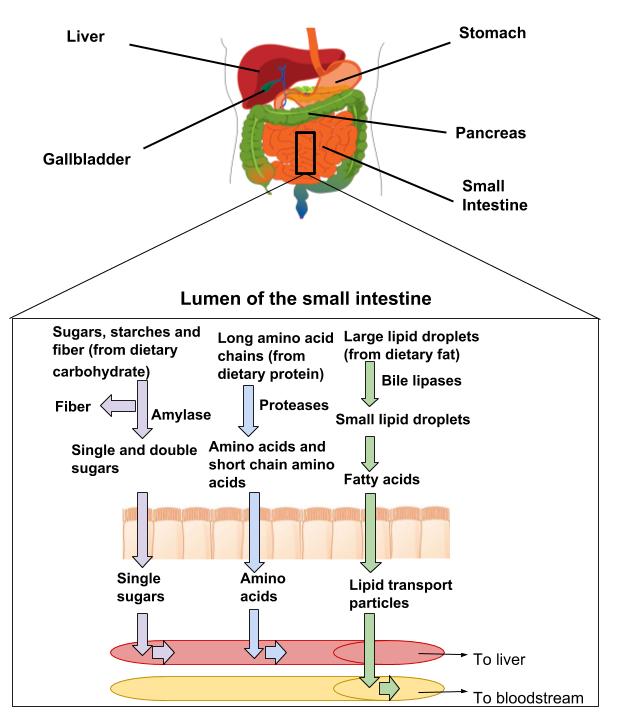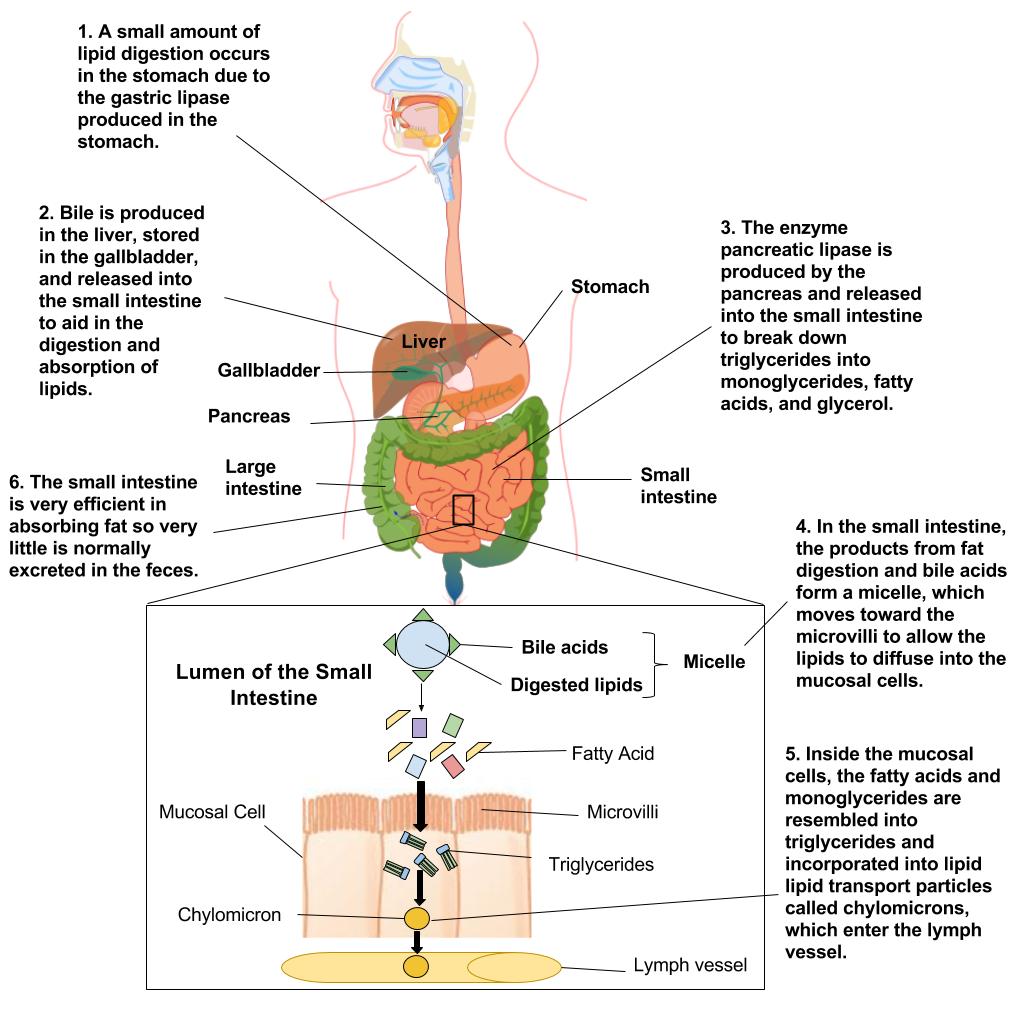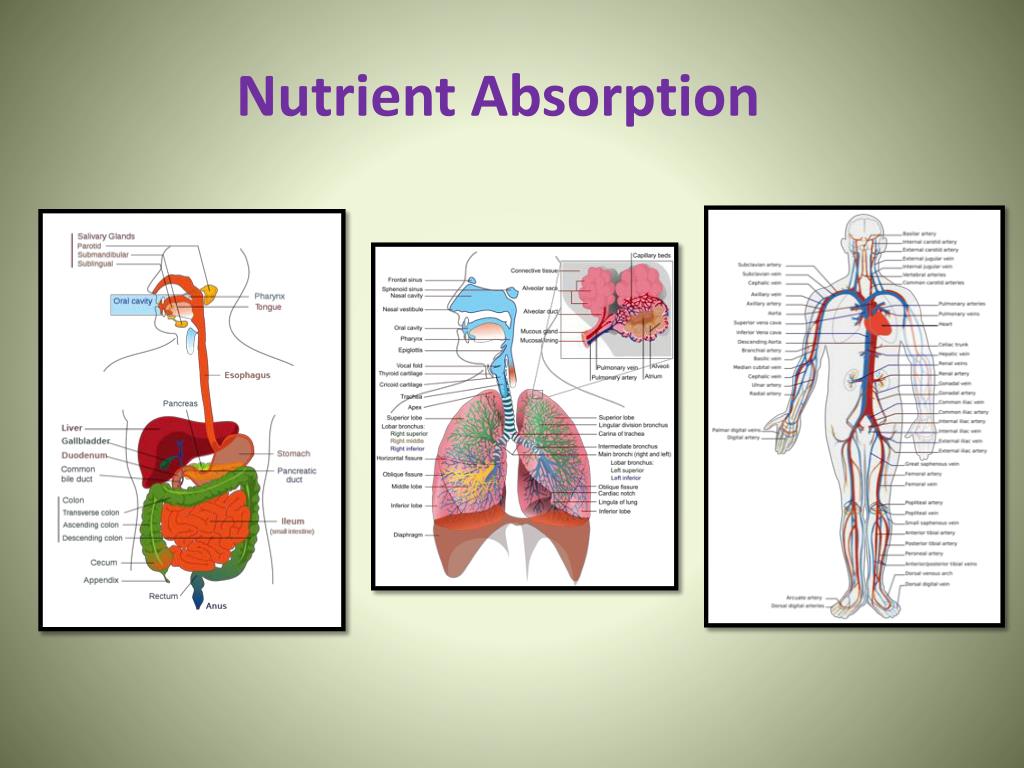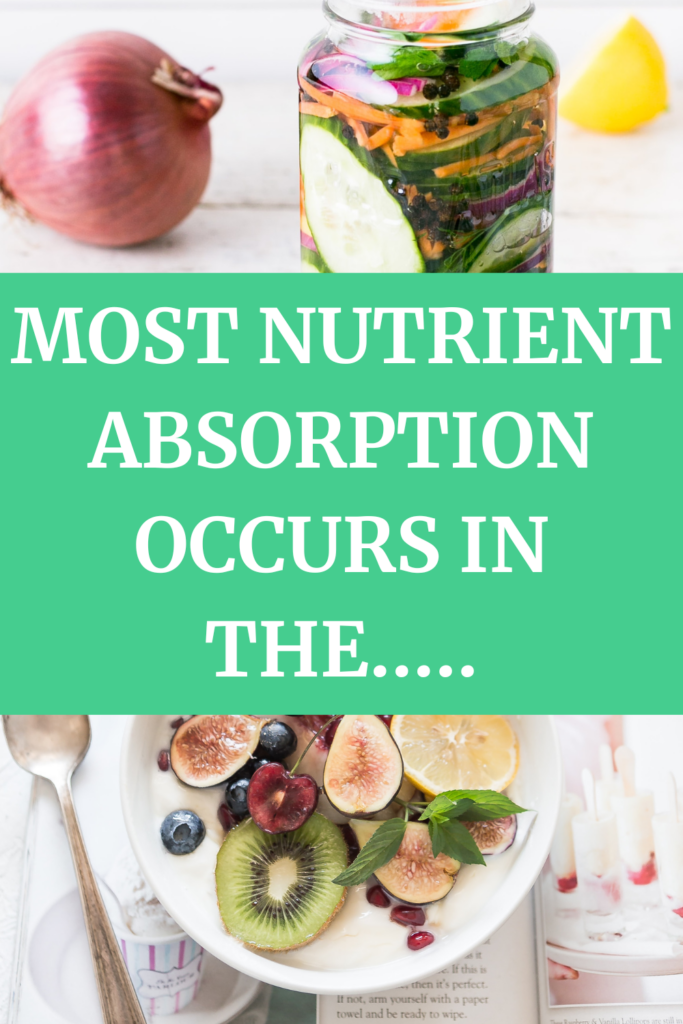Most Absorption Of Nutrients Occurs In The

For decades, the human digestive system has been the subject of intense scientific scrutiny. The question of where the bulk of nutrient absorption occurs is not merely academic. It holds the key to understanding and treating a myriad of digestive disorders and optimizing nutritional strategies.
Understanding the primary site of nutrient absorption is fundamental for designing effective drug delivery systems. It is also crucial for developing dietary recommendations that maximize nutrient uptake and prevent deficiencies.
The Small Intestine: The Absorption Powerhouse
The small intestine is the primary site of nutrient absorption in the human body. This elongated organ, averaging around 20 feet in length, is uniquely structured to facilitate the efficient uptake of essential nutrients.
Its immense surface area, significantly amplified by folds, villi, and microvilli, creates an extensive absorptive surface. These tiny, finger-like projections increase the area available for nutrient absorption.
Anatomy of Absorption
The small intestine is divided into three main sections: the duodenum, the jejunum, and the ileum. Each section plays a slightly different role in the digestive and absorptive processes.
The duodenum receives chyme from the stomach. It also receives bile from the gallbladder and enzymes from the pancreas, which aid in further breaking down food.
The jejunum is where the majority of nutrient absorption takes place. Its highly folded lining and abundant villi and microvilli make it exceptionally efficient at absorbing carbohydrates, proteins, fats, and vitamins.
The ileum primarily absorbs vitamin B12 and bile salts. These bile salts are essential for fat digestion and absorption.
The Absorption Process: A Detailed Look
Nutrient absorption is a complex process that involves both passive and active transport mechanisms. Small molecules, such as water and some minerals, can be absorbed passively through osmosis and diffusion.
Larger molecules, like glucose and amino acids, require active transport mechanisms. These mechanisms involve specialized transport proteins embedded in the intestinal lining.
These proteins bind to the nutrients and ferry them across the cell membrane. They require energy in the form of ATP to move molecules against their concentration gradient.
The Role of the Large Intestine
While the small intestine is the primary site of nutrient absorption, the large intestine plays a crucial, albeit secondary, role. Its main function is to absorb water and electrolytes from the remaining undigested material.
This process helps to solidify the waste and prepare it for elimination. The large intestine also harbors a vast community of gut bacteria.
These bacteria ferment undigested carbohydrates. This process produces short-chain fatty acids, which can be absorbed by the colon cells and provide energy.
Factors Affecting Nutrient Absorption
Several factors can influence the efficiency of nutrient absorption. These factors include the health of the intestinal lining, the presence of digestive enzymes, and the composition of the gut microbiota.
Conditions such as celiac disease and inflammatory bowel disease (IBD) can damage the intestinal lining. This leads to impaired nutrient absorption.
Enzyme deficiencies, such as lactose intolerance, can also interfere with nutrient digestion and absorption. Certain medications can also impact nutrient uptake.
The gut microbiota plays a vital role in nutrient absorption. Certain bacteria aid in the digestion of complex carbohydrates and the production of vitamins. An imbalance in the gut microbiota, known as dysbiosis, can negatively affect nutrient absorption.
Implications for Health and Disease
Understanding the process of nutrient absorption is crucial for maintaining overall health and preventing disease. Malabsorption, a condition characterized by impaired nutrient absorption, can lead to a range of health problems.
These health problems includes malnutrition, weight loss, anemia, and fatigue. Addressing malabsorption often involves treating the underlying cause. It also involves dietary modifications and supplementation.
For example, individuals with celiac disease must adhere to a gluten-free diet. This is necessary to allow the intestinal lining to heal and restore normal nutrient absorption.
"Optimizing nutrient absorption is key to preventing deficiencies and supporting overall health," said Dr. Anya Sharma, a gastroenterologist at the Mayo Clinic. "A healthy gut is essential for efficient nutrient uptake."
Future Directions in Nutrient Absorption Research
Ongoing research is focused on developing novel strategies to enhance nutrient absorption. These strategies includes targeted drug delivery systems and personalized nutrition plans.
Researchers are also exploring the potential of prebiotics and probiotics to improve gut health. These strategies could potentially enhance nutrient absorption and prevent malabsorption.
Another area of research is the development of bioavailable nutrient formulations. This ensures that nutrients are easily absorbed by the body.
By gaining a deeper understanding of the mechanisms underlying nutrient absorption, scientists hope to develop new and effective interventions to improve human health. These interventions aim to prevent disease.
Conclusion
The small intestine stands as the workhorse of nutrient absorption in the human body, its intricate structure and complex processes ensuring the uptake of vital components necessary for life. While the large intestine contributes by absorbing water and electrolytes, it is the small intestine where the vast majority of nutrients are extracted from digested food.
A thorough understanding of this process, along with the factors influencing it, is essential for optimizing health and addressing conditions related to malabsorption. As research advances, innovative strategies promise to further enhance nutrient absorption, offering new avenues for preventing deficiencies and improving overall well-being.



